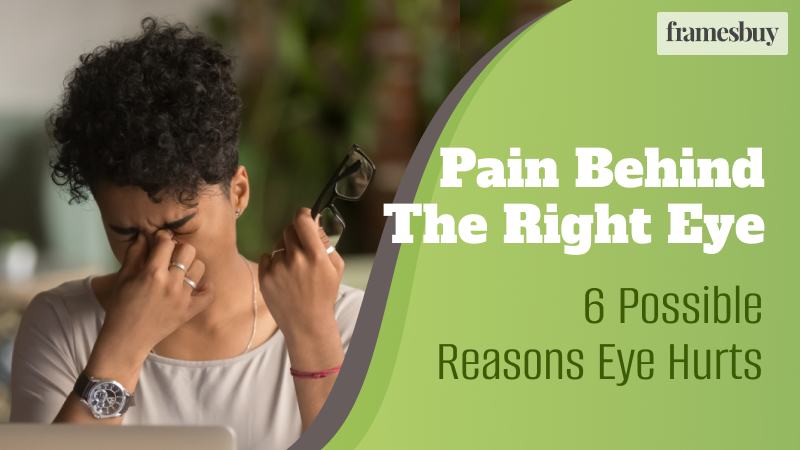Every one of us has experienced eye pain at some point in our life. Not always a matter of serious concern, eye pain is temporary and resolves without taking any treatment, however, sometimes the pain is uncomfortable and can be a sign of emergencies. The situation may require medical attention and quick intervention by eye doctors.
Pain, achiness, headache, or pressure behind the eye is not always general eye pain. This unpleasant experience can be accomplished by various other symptoms, one should keep eye on.
Common symptoms of throbbing pain behind the eye include:
- Red-eye
- Tearing
- Numbness or inflammation near the eye
- Double or blurred vision
- Pain while moving the eye
- Fever
- Weakness
- Fatigue
- Sinus pain
One of the important sensory organs in the human body, eye problems should never be ignored. Keeping this in mind, we are giving you the rundown on what is causing pain behind the right eye?
Common reasons causing pain behind the right eye:
Migraine or headache:
When you feel severe pain behind the eye, it can be the result of a migraine or other type of severe headache. The migraine pain starts from the eye and temple and spreads around your head making it more sensitive.
It should be noted that headaches are also associated with vision problems such as myopia, hypermetropia, astigmatism. Visiting an eye doctor for an annual eye examination is good to evaluate all the eye problem signs and have the right prescription in hand before your vision gets worse.
Inflammation or infections:
The sinus is also known as sinusitis causes inflammation of the space inside your nose. Meanwhile, the area surrounding the eyes and face also get inflamed causing eye pain in one or both eyes, redness, or headache.
Acute sinusitis complication can resolve in a few days however some rare complications may include chronic sinusitis that lasts for the long term, infection near the eye socket that may cause vision-related problems and blindness.
Optic neuritis:
Optic neuritis is the inflammation of the optic nerve that sends messages to your brain. Most people with this symptom have a dull ache behind the eye which gets worse with eye movement. In some cases, patients may notice sudden vision loss while others may experience blurred vision or colour blindness.
Closely linked to Multiple Sclerosis (MS), almost half of people with MS are diagnosed with optic neuritis as an early symptom of the disease.
Intraocular pressure:
Ocular hypertension – when IOP is elevated higher than usual. they can cause optic nerve damage, glaucoma, and permanent vision loss.
It should be noted that there is no specific level of IOP that causes glaucoma. However, early diagnosis and treatment is a good way to manage the side effects of the disease.
Contact lens irritation:
If you wear contact lenses regularly, you can be at a higher risk of Keratitis. This is the infection on the cornea (corneal ulcers), where bacteria, virus, fungi getting into the eye through lenses causes eye pain or redness.
However, following the proper contact lens hygiene as recommended by an optometrist is best to keep the eye safe from infections.
Eye injury:
Eye or face injury during outdoor activities or accidents can cause pain behind the eye, headache, redness, inflammation and other symptoms. If the pain seems serious and is accompanied by other symptoms such as flashes of light, trouble seeing, or vision problems, It is good to seek medical help immediately.
When to visit a doctor?
Though pain behind the eye may not be a matter of concern, however, in some cases this can be an indication of some associated condition that may be far more concerning.
If the pressure in the eye is followed by serious symptoms, say vision loss, bulging eye, fever, frequent headache, inflammation, or persistent pain, contact your doctor immediately.
Diagnosing the issue, he/she will provide you the treatment or refer you to a specialist for further investigation.
Eye pain or pressure behind the eye – why should you concern:
Your eyes are vulnerable, don’t take vision for granted. Sometimes an uncomfortable eye. you ought to ignore can be a serious call or an early sign of eye disease. This is why seeking an appointment with a specialist for an accurate diagnosis of the condition is important.
We suggest keeping track of all the symptoms you notice with eye pain and discuss them during your next visit with an optometrist professional. This will help them find the triggering causes of pain and suggest a proper course of action for treatment.







